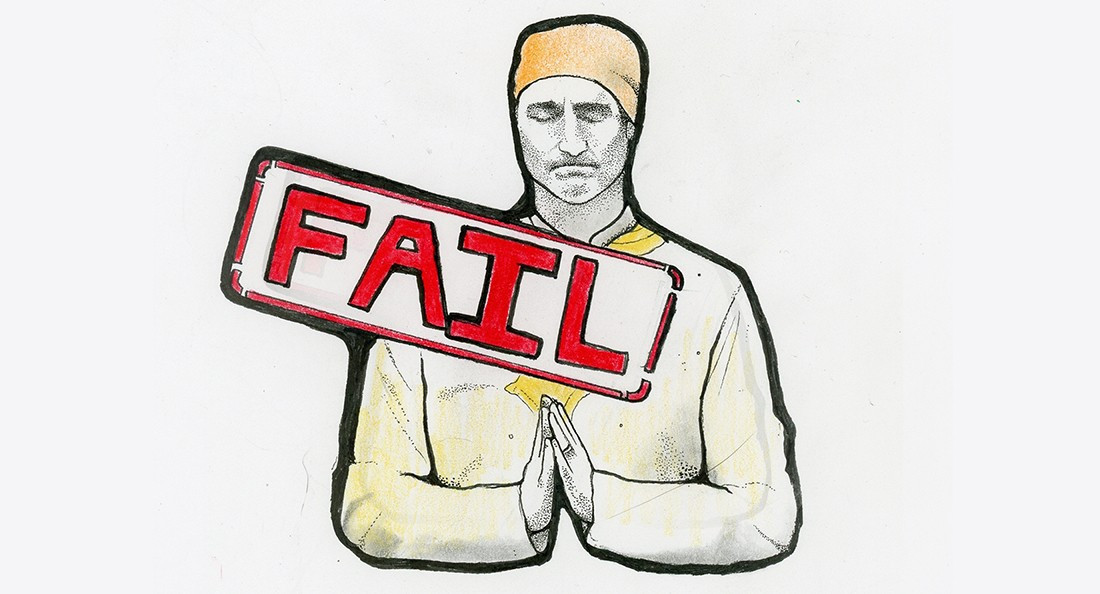Currying Favour
Prime Minister Justin Trudeau’s attempt to win the brown vote
Since his election and consequent wane in popularity, Prime Minister Justin Trudeau has been the butt of countless jokes and memes, the most amusing of which were generated during his recent tour of India. In February, the Prime Minister travelled with his family and a predominantly Indo-Canadian group of MPs for a week to India to strengthen diplomatic ties and secure financial partnerships.
Dressed in the flashiest kurtas, more fitting of B-list Bollywood actors than state heads, the Trudeau family moved around taking photographs and performing fake-deep spirituality in an Orientalist fairy-tale of their own making.
At holy sites and public functions, they donned silk trousers, bejewelled collars and bright colours, which – to be completely honest – need to register with melanin-sufficient skin-tones to be pulled off. So outrageous and unprecedented were their clothing choices they inspired dozens of op-eds, such as Toronto Life’s “People Aren’t Thrilled with Justin Trudeau’s Indian Wardrobe.”
Toronto Life, do you mean to say people no longer enjoy having their culture appropriated by melanin-deficient, vote-hungry politicians? Gasp.
In particular, the most vocal individuals leading the charge against the Trudeaus’ sartorial mishaps were South Asian national and diasporic agents, who unlike their parents’ generation, have gotten bored of white people’s misplaced appreciation for their culture.
We deserve more than what Justin and his sickly-sweet Sophie can give us. And – surprise, surprise – we saw through their parade of garish clothes, holier-than-thou smiles and calculated hands in prayer as a way of securing our brown vote in the upcoming federal election in 2019.
But don’t let the Trudeaus and their Bolly-dressed democracy fool you into thinking that the Indian trip was a total failure. Not by a long shot. Trudeau’s journey into the heart of India can and should be considered successful in its own right, because it brought to the fore the ongoing tensions between Hindu and Sikh Indian citizens that have gone unacknowledged since the events of 1984.
To be brief, 1984 marks the year that then-Prime Minister of India, Indira Gandhi, ordered Indian Army soldiers to launch an attack on the holiest Sikh site, the Golden Temple in Amritsar, to capture Sikh separatist leaders, presumed to be in hiding.
Unsurprisingly, few leaders were found and what transpired, instead, was a total massacre of innocent Sikh pilgrims and desecration of the holy site, which included irreplaceable texts and artefacts kept in the temple’s museum.
In the months and years following countless other attacks instigated by the Indian government, members and sympathizers of Sikh separatist groups assassinated Indira Gandhi and launched the Air India bombing in 1985 that killed 329 people, 268 of whom were Canadian citizens.
In this fraught landscape of deep hostility and betrayal entered Justin Trudeau, who made the mistake of inviting Sikh-Canadian separatist leader and convicted terrorist Jaspal Atwal to dinner.
In the end, Trudeau’s trip to India has its place in a long chain of events where it is the white colonialist/politician’s visit that opens the native’s eyes to local divisions. It is time for India to acknowledge their responsibility in the genocide of my people in 1984.
As we have learned (time and time again) fractures have consequences when they become large enough to let the colonizer in. To reiterate Trudeau’s own justification: It is 2018 …
Noor Bhangu is an emerging writer and curator currently living in Winnipeg, Treaty 1. Her projects include Soon: South Asian Evocations and Becomings and womenofcolour@soagallery.
Published in Volume 72, Number 22 of The Uniter (March 22, 2018)







